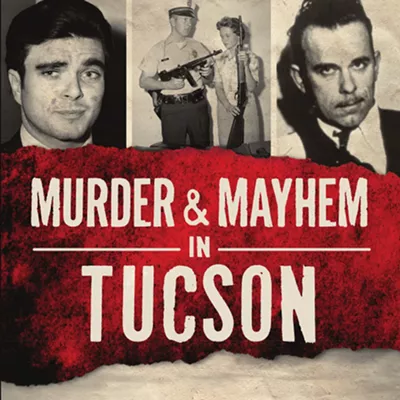The first books in the series highlight two well-known desert critters: coyotes and javelinas. The books are written by nature author and columnist Lauray Yule, a former staff member of the Arizona-Sonora Desert Museum. Yule is an avid hiker and caver who loves the outdoors and what it offers in the way of wildlife--and that love transposes itself to words on paper.
Coyotes deals with the animal that has battled the roadrunner to become the icon of the West, and in her treatise, Yule discloses some surprising facts about the wily, mischievous Canis latrans, whose scientific name translates as "barking dog." She has amassed a tremendous amount of knowledge about the species that offers nightly symphonies of yips, yaps, barks, wails and howls--allegedly with no phrase repeated. The author does not cite references, so you have to take her word for the veracity of statements made, but that's not hard to do when the information comes from a science journalist with 25 years of experience.
No animal has received as much attention as the coyote in Native American legend. Stories describe the animal in a variety of ways--as a creator of life and a deity, as well as a wily trickster and a greedy glutton. "These enterprising animals are full of surprises," Yule writes, "with golden-yellow eyes that betray calculating intelligence and curiosity of a high-order predator."
In a section called "The Odd Couple," she tells how coyotes and badgers team up to hunt rodent-rich burrow sites. While the badger digs for dinner, the alert coyote stands by, watching access holes. When a rodent bolts, the coyote pounces, and the animals get a 2-for-1 meal deal.
Yule says that coyotes have adapted to many environmental situations, because the animals will eat just about anything. "Though primarily carnivores, they'll even raid fruit orchards and vegetable gardens. Even commercial chile-pepper fields aren't spared: The bandits eat the pepper flesh--and spit out the seeds!"
Her second book, Javelinas, spotlights the collared peccaries that arrived in the American West more than 300 years ago, migrating from South America. Because the nearsighted herd animals lack 20/20 vision, they live in a world of scent and sound, grunting, barking, growling and squealing to communicate. Although they are built low to the ground, they are surprisingly nimble when startled, stirring up a cloud of dust with a 25-mile-an-hour gallop. "These forty- or fifty-pound animals can broad-jump six feet from a standstill, and despite their stiff-legged gait, can bound a distance of nine feet on the run," she writes.
Although their faces may be cute enough to evoke a smile, not much else is appealing enough to prompt a grin. These smelly critters with their bristly hides and spitting musk gland earn their bad reputation by eating cactus and succulents, trampling residential flowerbeds and knocking over trash cans to get nighttime snacks.
Quality photography by outdoor camera artists, including the late Erwin and Peggy Bauer and local lenspersons Tom Vezo and Robin Stancliff, augment Yule's entertaining and educational text material. Another positive found in the Coyotes and Javelinas books are "Suggested Readings" and "Recommended Web sites," as well as lists of places in the West where you might see the featured animals in the wild.
Rio Nuevo will follow these first-in-the-series nature books with Roadrunners and Gambel's Quail, both written by noted bird expert Lynn Hassler Kaufman. Yule, meanwhile, is at work on a new natural history project that covers a grab bag from bugs to bighorns.
Other subjects in the series will range beyond plants and animals to include rugged people steeped in Western history, ghost towns and working ranches, and ancient pueblos to ultramodern urban areas. The books will have some recognizable physical commonalities: publication size (6" x 6"), page count (64) and consistent price ($12.95).






